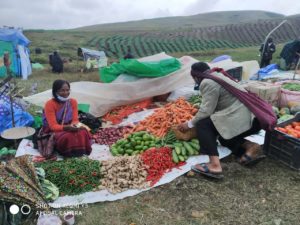NESFAS has taken collaborative measures to document food festivals, storytellers, agricultural practices, cultural diversity, plants and ethnobotanical information and other related activities and events. The documentation of agrobiodiversity is paramount for maintaining visibility to a wide audience. This information gathering is combined with local knowledge for accumulating ethnobotanical information that requires local knowledge of best practices related to it.
The documentation is carried out through dialogue with local knowledge holders, events that showcase such knowledge, and through activities like biodiversity walks, Slow Food activities etc.
During Mei Ram-ew a team of documenters gathered the local and scientific names of more than 200 different edible crops that are safeguarded by communities in the North East. This is an impressive number when confronted with the state that of our major global crops and global statistics that show that are no more than 30 crops that make up the diet of an average person in India.
Two focused events on wild edibles in Sheilla block, East Khasi hills documented as many as 100 wild vegetables that are threatened in terms of consumption and in-situ protection. NESFAS integrates these documentation into biodiversity walks, livelihood activities such as indigenous cafés, and strengthening local markets.
Five villages in Jaintia Hills have participated in documenting wild edibles together with their cultural background and challenges.
Participatory documentation in East Khasi Hills has resulted in pilot initiatives such as herbaria, selfdocumentation as well as a festival on wild edibles and innovative recipes.
In Khatarshnong, a cluster of 4 villages has gathered to document local seed saving practices that
have culminated in a local seed fair. This has resulted in documentation of 20 land races of potatoes together with other recipes, taste aspects and cultivation methods. An interactive pubic event was also held where communities exchanged seeds to revive some of crops that are being lost.
A schoolbook on traditional food has been initiated that is expected to be an example that can inspire the youth to take up revival and promotion of local biodiversity.
A photo documentation archive of more than 1000 pictures has been archived thematically so that it can be used for presentations at a national and international level. Some of the themes include local agrobiodiversity, custodian farmers and Youth.
Community biodiversity registers (CBR) have been discussed with communities and initiated through pilot documentation activities. In the future NESFAS plans to concretize these People’s Biodiversity Registers (PBRs) with the help of given formats and strategic planning.






